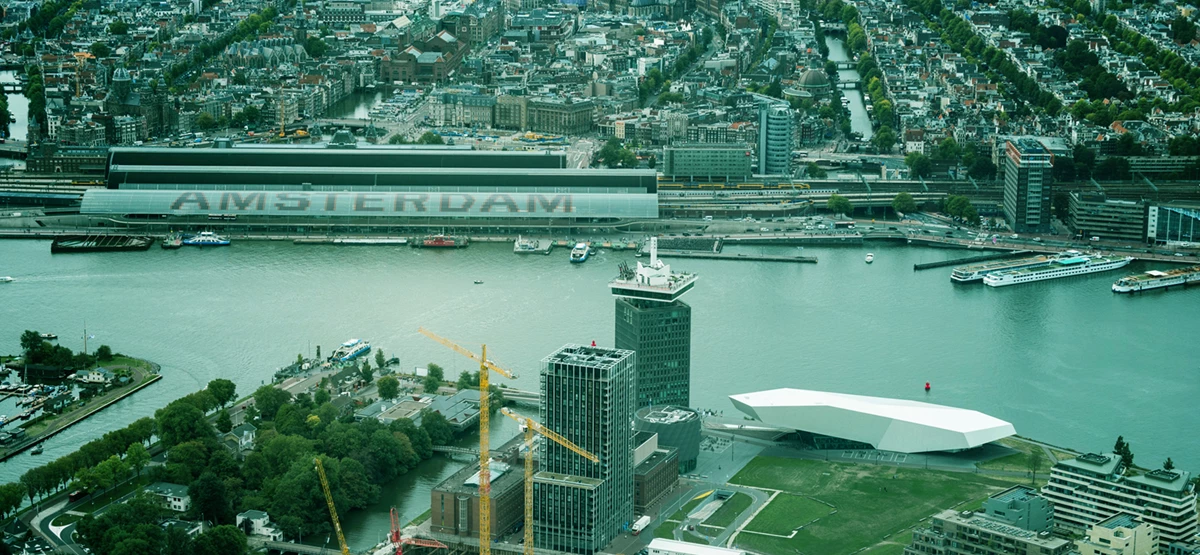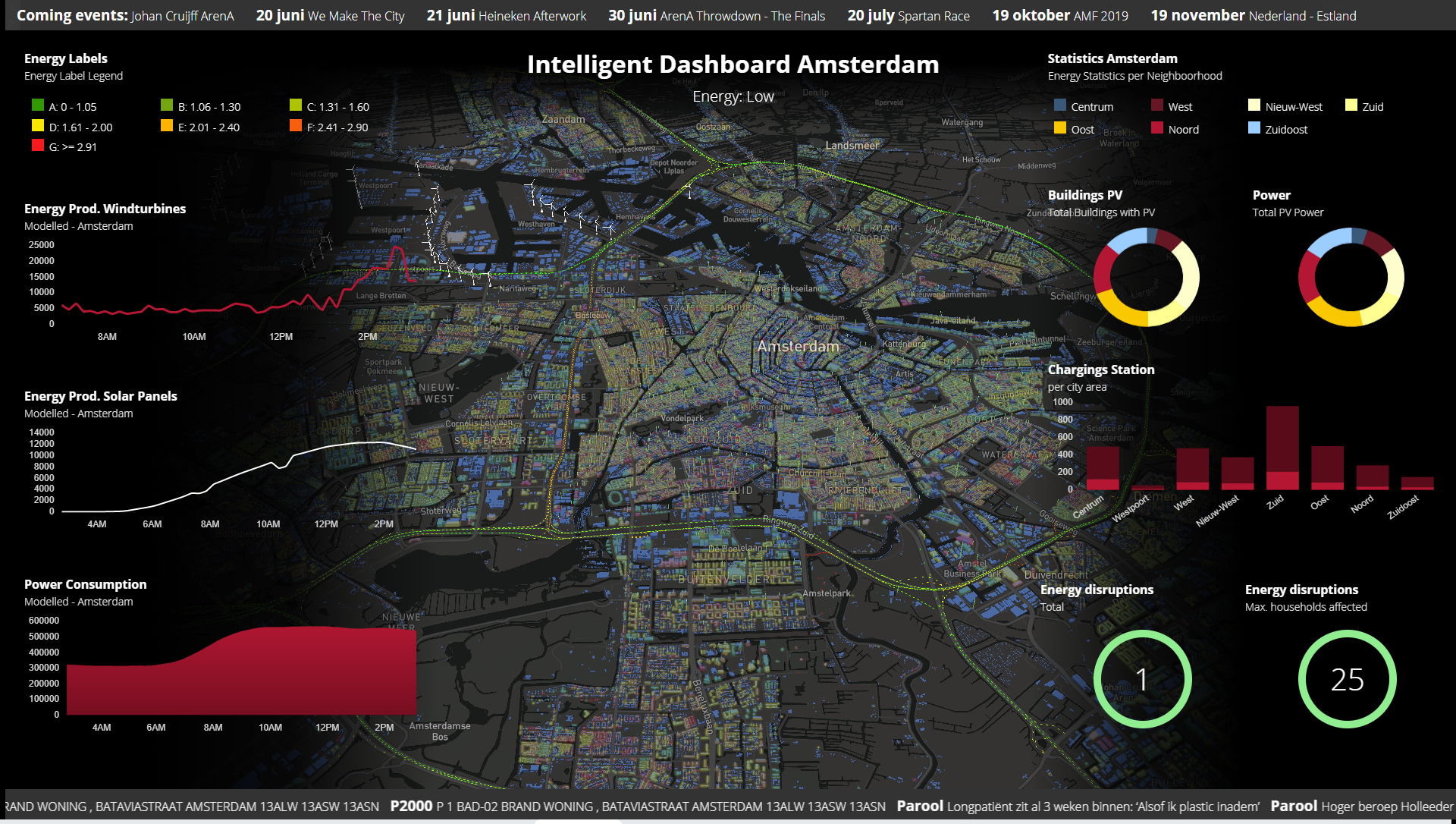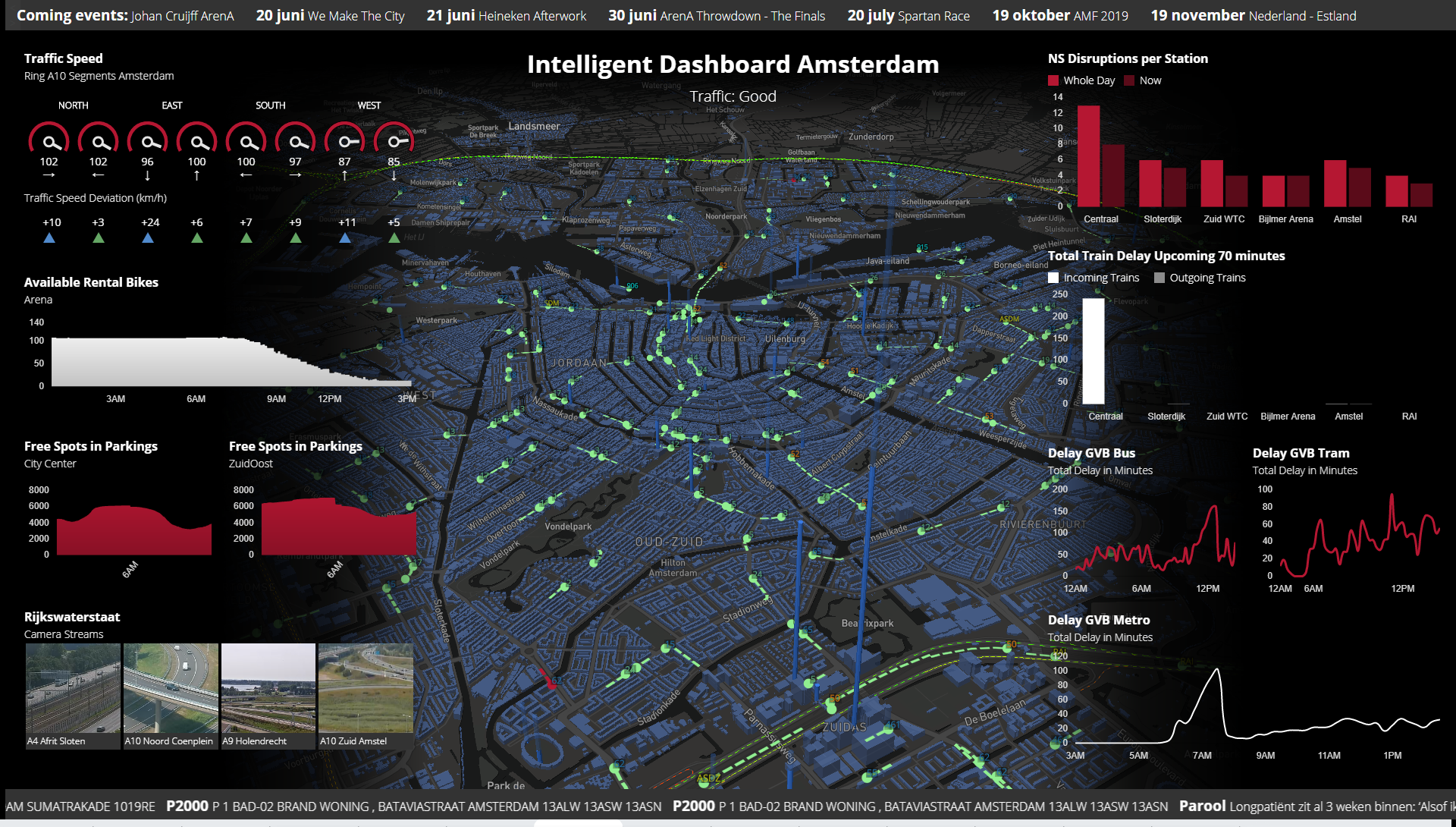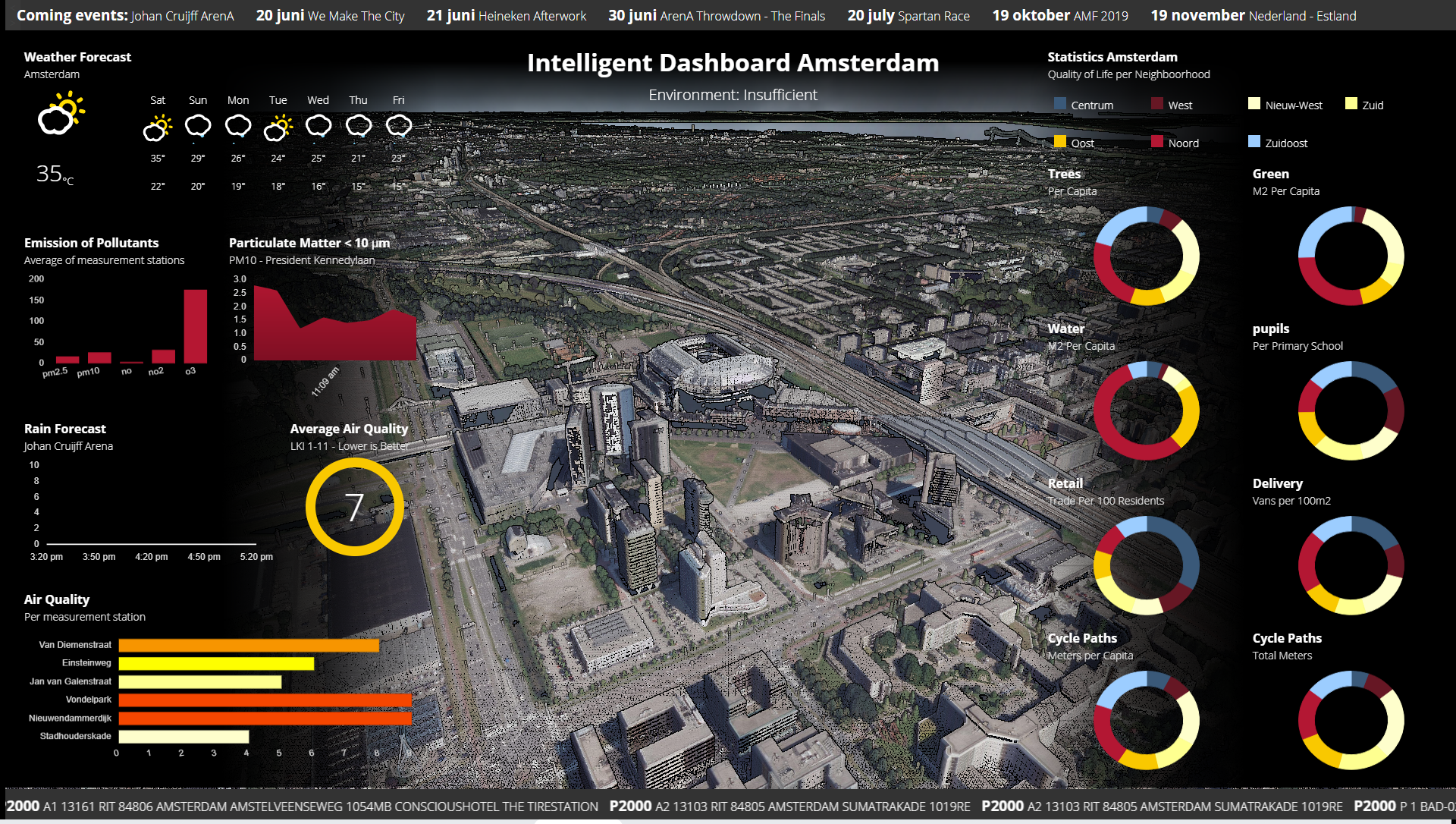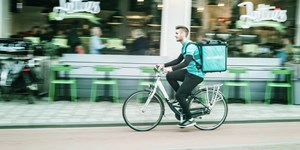The state of the city at a glance
But how do you develop a smart, sustainable city? For its transition into a smart city, the City of Amsterdam has teamed up with the Johan Cruijff ArenA, Geodan and other partners. In recent months, it has also been working on its own Amsterdam Smart City Dashboard, which displays the current state of the city and its most critical processes at a glance. It is based on the three key elements for any smart city: energy transition, living environment and transport. Showing the various data within these elements instantly provides the City and its stakeholders with valuable information: about the current situation and, using reliable models and analyses, for the future as well. The predefined KPIs (Key Performance Indicators) help users to monitor and manage the system, because while setting objectives for the smart city is a good thing, measuring progress is even better.
